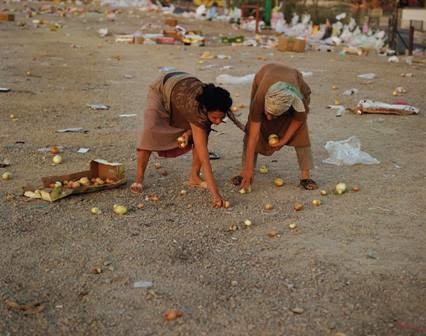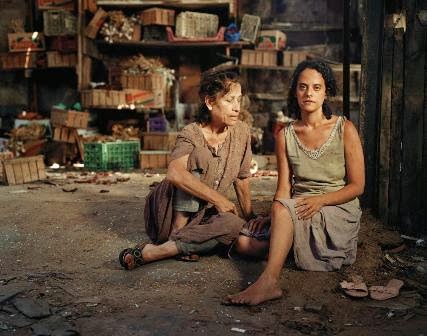Reflection for Today ▶️ ⏩ ⏹️
The Gleaners (Des glaneuses) by Jean-François Millet. Oil on canvas, 1857, location: Musée d'Orsay, Paris
And Ruth the Moabitess said unto Naomi, Let me now go to the field, and glean ears of corn after him in whose sight I shall find grace. And she said unto her, Go, my daughter.
— Ruth 2:2
For all the focus on the story of Ruth as a parable of love, kindness and loyalty it is easy to forget that this is also a story of great poverty.1 In those times women without men were considered non-people, whose survival relied solely on charity. Naomi had lost her husband and both her sons, Ruth her husband. All they had in the world was each other. Naomi and her family had originally left Judah due to the famine. She returned with Ruth because she had heard that the Lord had visited his people in giving them bread,2 but neither Ruth nor Naomi had the wherewithal to purchase food. They were destitute. Their only option to avoid starvation was to glean the fields of the wealthy. Gleaning was the practice of gathering the unharvested grain, essentially the grain that had been dropped and left behind. So common was this practice that the more devout and compassionate farmers made a point of leaving gleanings in their field to fulfil the Levitical and Deuteronomic law, designed precisely to support the vulnerable.
When you reap the harvest of your land, you shall not reap to the very edges of your field, or gather the gleanings of your harvest; you shall leave them for the poor and for the alien: I am the Lord your God. — Leviticus 23:22
When you reap your harvest in your field and forget a sheaf in the field, you shall not go back to get it; it shall be left for the alien, the orphan, and the widow, so that the Lord your God may bless you in all your undertakings. — Deuteronomy 24:19
Ruth the alien widow had thus the blessing of her new-found God to glean the nearby fields that she and her mother-in-law may survive. The Israeli artist Adi Nes offers us a modern-day view of Naomi and Ruth, reminding us of the harsh, scavenging reality that was the backdrop to this story of love and dignity.3


Today, 29th March is my father's birthday. I am reminded of his own weekly practice of 'gleaning'—collecting the discarded fruit and vegetables in Lewisham market, the fresher discards to cook for our meals, the mushier stuff to make jams and chutneys. We weren't destitute, but without my dad's faithful commitment to scavenging, reusing and recycling perhaps we'd have had less than we actually did—certainly less chutney. Albeit reluctantly, and not without some embarrassment, I learned a lot about social economics, ecology and waste management from my father's excursions to the market. Happy birthday, Papa.
1 A fascinating study of Ruth in relation to the pandemic (sic) of 2020-22 can be read here, The Book of Ruth: A story about famine offers a powerful lesson for a pandemic by Mijal Bitton, 26/05/20
2 Ruth 1:6
3 Ruth & Naomi, staged photographs by Adi Nes, Jack Shainman Gallery, New York, 2006